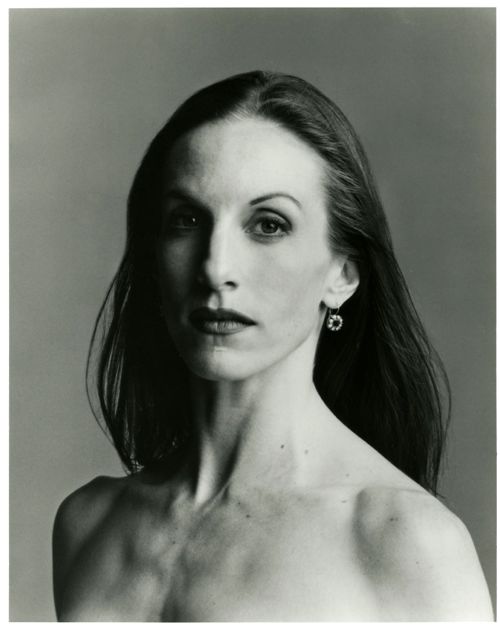Wendy Whelan knows how to make her “sunset years,” so to speak, work well as a much-admired principal dancer—a veteran of over a quarter-century with the New York City Ballet. With this company, astute technique has become an essential—indeed the foremost—of a star dancer’s attributes, competing only with musicality, which is not Whelan’s primary forte. And, at the age of 47, some of this ballerina’s technical prowess, which was distinctive as she displayed it, is naturally failing her. Anatomy is remorseless.
Of late, presumably conforming to the company’s wishes, Whelan performs fewer roles. One of the ploys that sustains her reputation, showing off the kind of movement in which she is now most poignant, is to dance slowly, with precise delicacy. She takes on roles in which legato becomes almost a fetish. A beautiful fetish, I would add, though I wouldn’t want to watch a daily dose of it unless I was also getting to see its opposite—to say nothing of its middle ground—in the course of a program.
It would seem that a goodly number of the School of American Ballet nymphets, from whom Whelan’s successor will eventually emerge, admire, even revere her. For many, she is their role model. See, for example, her account of the duet in Christopher Wheeldon’s After the Rain—it’s become almost an iconic piece for her. Its subject, incidentally, is a quiet but heart-wrenching farewell. Jock Soto, who originated the role of the man in the duet, was about to retire from the company, a great loss to all concerned.
Tall, rail thin (her body sometimes looks alarmingly undernourished in roles not requiring tights, which smooth out many a revelation), with the profile of a crown princess, Whelan manages to appear imposing and vulnerable at the same time. The critic John Rockwell has aptly referred to her “sinewy lightness.” Her arms often fall into a hieratic angularity—as if insisting on an important part of her birthright. Typically, every move she makes, she makes her own as well as the choreographer’s.
Most interesting as a career move in Whelan’s current life is her expanding the way she can still be seen as a dancer who looks very special. Characteristic of the arrangements she has worked out is her upcoming show, Restless Creature, which will have its official premiere at Jacob’s Pillow’s Ted Shawn Theater, August 14-18. For this she has commissioned four ballets by four newish choreographers—works presumably tailored to the assets she still has available, which, so far, are many. The choreographers invited to merge their imaginations with hers are Kyle Abraham, Josh Beamish, Brian Brooks, and Alejandro Cerrudo.
In some ways I wish she wouldn’t pursue this activity. In the end, it’s always a sad and losing battle. For other reasons, I hope she will. If ever there were a dancer out to make the most of herself—and expend enormous valor of body and soul in doing so, it is Whelan. May I confess that I would prefer a gentler goodbye? Something like Kyra Nichols’s last few seasons, which made “less is more” piercingly meaningful? No, probably not. The two dancers harbored very disparate souls. At any event the choice is hardly up to me.
Note: On April 14 and 15 at 7:30, the Works & Process series at the Guggenheim Museum will be devoted to Whelan and her Restless Creature. Ella Baff will moderate a discussion with Whelan and the quartet of choreographers she has commissioned for the piece.
Photo: David Michalek
© 2013 Tobi Tobias





Wendy Whelan at Jacob’s Pillow! When I read this I was instantly transported to my first visit there. It was to see Margot Fonteyn dance (very carefully) late in her career. With that thought, I felt a wave of sorrow. I have enjoyed watching Wendy Whelan so much, for so long (in spite of Alastair Macaulay’s criticism, which I don’t agree with), including her lovely, self-deprecating humor during discussions at New York City Ballet. Thank you for writing this artful piece.
Lovely writing for a lovely dancer, seen in Portland several years ago performing in a gala in support of Oregon Ballet Theatre. Whelan is a generous dancer in every way.
No need for a dancer of Whelan’s particular gifts to go gently. If she wants it, I think she might have the kind of après-ballet career that Baryshnikov has enjoyed.
What a gift to these four “newish” choreographers!
Tobi, as usual you are right on the mark. Time has proven Wendy Whelan to be a great artist.
There are so very few ballerinas in our current dance world whom I can consider an artist. Artistry involves not only talent, training, skills, craft, and personality, but also a soul.
I have watched Whelan develop as a dancer through the years, yet only recently did I begin noticing her artistry–and her expression from within. (I know her only slightly, but am convinced that she is a real person; something inside always shines through.)
I saw Wendy in “Rain” a couple of times. It seems to be an expression of, one might say, her technique and artistry.